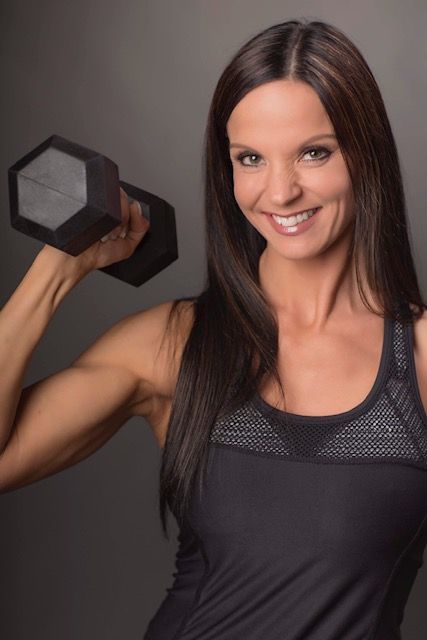Five Common Fitness Myths Debunked

As a Personal Trainer, I hear a lot of varying beliefs surrounding working out, and unfortunately, there are still many commonly held beliefs that are just plain inaccurate.
Here are five fitness myths that I’d like to bust wide open so you may have a better understanding of what’s happening with your body as you work out and because structuring your training around such beliefs could be dangerous.
1. You can spot-target fat loss.
This may not be the #1 most common misguided belief, but it may be the one most people WISH was true. Wouldn’t it be wonderful if we could dictate exactly where our body puts and loses fat? Unfortunately, this is simply not the case. Each body is different and each body, thanks to its genetics and makeup, determines this on its own. Hormones play a huge part in this equation, and particular hormonal profiles may cause a build-up of fat around your middle, in your thighs or on your bottom. So what does this mean exactly? Well, for one thing, doing 100 crunches a day isn’t going to give you that visible six-pack you’re hoping for if your body holds onto fat there. You WILL be building muscle there, but unless you lose enough fat (which comes off the entire body simultaneously) you won’t SEE the sculpted abs. This is why our diet is so important.
2. Muscle will turn to fat if you stop training.
I remember hearing this decades ago and am surprised it is still circulating. Muscle and fat are two entirely different tissues in the human body and simply cannot change from one to another. If you quit working out, your muscles will not turn into fat; your muscle mass will simply decrease, meaning you will be less “toned”. If you continue to eat as you did when you were training (meaning you needed more calories then) you may also gain fat. So the loss of one (muscle tissue) and the addition of the other (fat) are separate but often related.
3. Women need different exercises from men.
Although there may be several arenas in which women’s needs are different from men, fitness is not one of them. The principles of weight, cardio and flexibility training are the same for both women and men. There may be little adjustments that we make for each gender, women do not, in fact, have to train (or stretch) any differently than their male counterparts. It is this type of stereotype that can be harmful to many women’s workout routines
4. The more exercise you do, the better (you should work out every day).
This commonly held belief in the world of fitness can lead to over-exertion, burnout and injury. Our muscles need time to recover and therefore, daily workouts, if not planned specifically to use different muscle groups, may do more harm than good. I suggest focussing on the quality of your workouts and staggering your weight-training days with your cardio days, which, by the way, do not have to be an hour long to reap rewards!
5. You need to train for at least an hour a session in order to see results.
Perhaps it is because many fitness trainers, gyms and studios offer one-hour sessions that this misguided notion has stuck. However, the old adage “Quality over quantity” really holds more weight here. You can train for ½ hour and get even better results than you would at one hour depending on the intensity of the workout. In fact, changing your focus from your regular hour-long sessions to that of shorter, more intense workouts may just bring about faster results!

